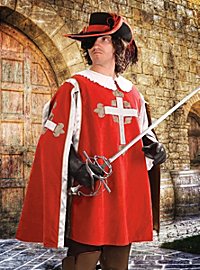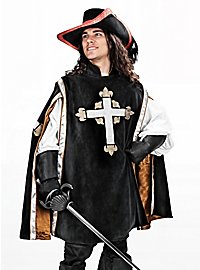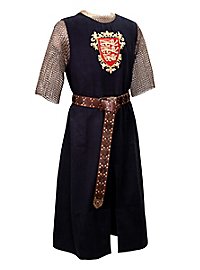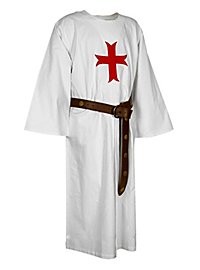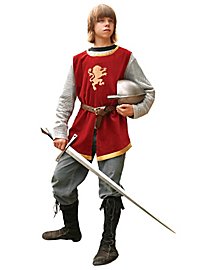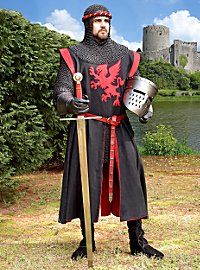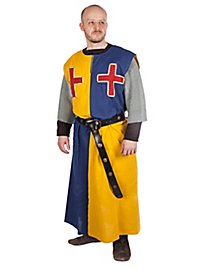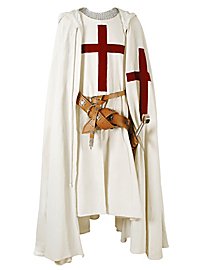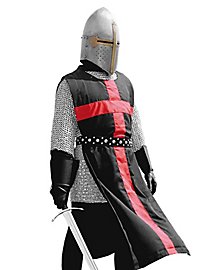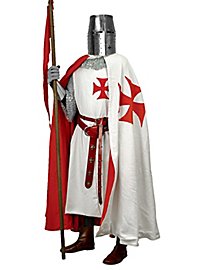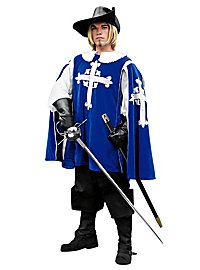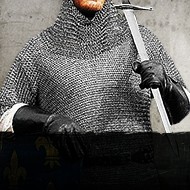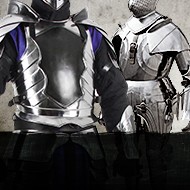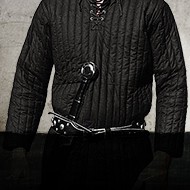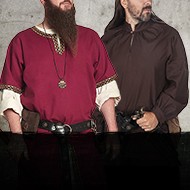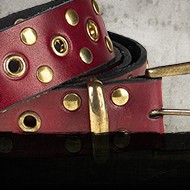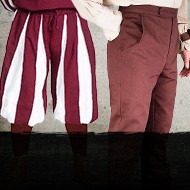The tabard - typically medieval!
A tabard is the garb of the knights and soldiers of the Middle Ages, par excellence. Tabards served as a distinctive sign of belonging to a troop and were therefore in the colours of the regiment or banner. In principle, they were a coverlet made of linen, wool or cotton and often but not necessarily sleeveless. A surcoat, however, always had a military or status-giving context in contrast to a tunic. Tabards are mainly typical of the European Middle Ages, the Vikings or peoples of the Orient tended to wear tunics or caftans. In our Medieval Shop we have a variety of historical surcoats made of 100% cotton, and various tunic colours to outfit a troop in LARP or a medieval event.
Coat of Arms or Tabard - What's the Difference?
The answer is simple. There is no difference! The tabard was also often called a coat of arms. It was worn over the armour and held together by a belt or sword hanger at the hip. Tunics were often heraldically decorated with the crest of the feud in which the knight or soldier served. Simple soldiers were usually only equipped with the colour code of this coat of arms. Typical of medieval coats of arms is also a two-coloured division, the so-called Mi-Parti, which generally made group affiliations clear in the European Middle Ages. Probably one of the best-known representatives of tabards is the tabard of the Crusaders in white with a red cross. The symbol of the cross was of course the symbol of choice for pretty much all Christian orders of chivalry, such as the tabard of the Johannites, but none is as iconic as the cross in red of the Knights Templar who marched against Jerusalem. A set of tabard and cloak for a Templar is available with us.
Musketeers' tabards
The surcoats of the Musketeers of the Guard of the French King Louis XIII in blue with a white cross are also a prominent representative of the surcoat due to the novel of the Three Musketeers. Historically they were worn over a velvet red frock coat. In red, with a white cross, they are of course the counterpart of the Garde du Cardinal de Richelieu. In Alexandre Dumas novel, the counterpart of the Musketeers. Both iconic Musketeer tabards are available from us in 100% cotton for an impressive appearance at a Renaissance event, or even at Carnival.
Buying a tabard - What do you have to consider?
If you want to buy a tunic of arms, you should not think of it as a garment that fits tightly to the body. A tabard is worn over armour, which typically consists of a gambeson or padding, chain mail or even plate armour pieces. In other words, you are a good deal wider than you actually would be. In addition, despite the armour, a tabard is not tight-fitting but falls airily over the armour. It is therefore advisable to choose a tabard that is rather large and, above all, with a wide chest and, in case of doubt, to resew it with regard to your own leg length, which is better than having chosen one that is too small. When trying it on, one should accordingly also put on the maximum degree of armour that one wants to wear. Then you can't go wrong when buying a tabard.
